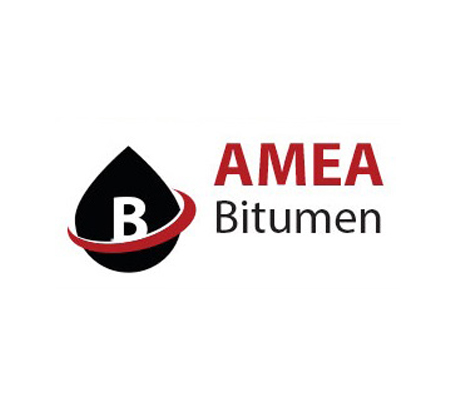Why Global Drilling Companies Prefer Gilsonite Additive for Drilling
In the world of oil and gas drilling, using the right materials is key to making operations safe, efficient, and cost-effective. One material that has gained a strong reputation among drilling companies around the world is Gilsonite, especially as a gilsonite additive for drilling. When used as an additive in drilling fluid, Gilsonite helps solve common problems that occur during drilling, such as borehole instability, lost circulation, and fluid compatibility. Its proven performance and versatility make it a reliable choice in demanding drilling environments.
What Makes Gilsonite a Unique Additive for Drilling?
Gilsonite is formed from ancient plant matter and has properties similar to petroleum-based asphalt. This makes it especially useful in oil and gas applications. Unlike many synthetic additives, Gilsonite is organic and environmentally friendlier, which is a big plus for companies trying to reduce their environmental footprint.
How Gilsonite Improves Borehole Stability
One of the biggest challenges in drilling is borehole instability. As drilling progresses deeper into the earth, the surrounding rocks—especially shale formations—can become weak and collapse into the well. This leads to delays, increased costs, and even equipment damage.
Gilsonite helps prevent this. It acts as a stabilizer, strengthening the walls of the borehole and preventing them from breaking down. Its resin-like structure works like a sealant, filling in cracks and weak points in the rock, helping keep the wellbore intact.
Its high softening point also means it can handle the high temperatures found deep underground without breaking down or losing its effectiveness. Laboratory tests have shown that Gilsonite performs well in simulated downhole conditions, making it reliable for real-life drilling projects. This ability to support well integrity is one of the main reasons it is so widely used in the oil and gas industry.
Gilsonite and Lost Circulation Control
Another common issue during drilling is lost circulation. This happens when drilling fluid, also known as drilling muds, escape into porous rocks, cracks, or fractures instead of staying in the borehole where they are needed. Lost circulation can stop drilling progress and pose serious risks.
Gilsonite is especially helpful here. It has a low specific gravity and is naturally good at sealing cracks and porous formations. When added to drilling fluids, Gilsonite forms a strong barrier that plugs openings in the rock, helping to prevent fluid loss. It works well in both naturally fractured rocks and man-made fractures caused by drilling.
Since it was first introduced in drilling operations in 1957, Gilsonite has been used in over 200,000 wells to prevent or cure lost circulation problems.This long history shows how dependable and trusted the material is in the field.
Gilsonite Additive for Drilling: Compatibility and Cost Benefits
Gilsonite is also easy to work with. It blends well with other components in drilling muds and doesn’t require complicated preparation. Because its chemical structure is similar to petroleum-based materials, it mixes smoothly with asphalt binders and other common drilling additives.
From a business perspective, this compatibility is great news. It means fewer extra chemicals are needed, which helps reduce costs. Gilsonite can also take the place of some expensive anti-stripping agents and adhesion promoters, while still protecting drilling equipment from moisture damage and improving the overall strength of the drilling fluid.
By offering good performance at a lower overall cost, Gilsonite provides excellent value for money, especially in large-scale drilling projects.
Environmental and Safety Benefits of Gilsonite
In today’s world, environmental impact is an important factor in every industry—including oil and gas. Gilsonite stands out because it is naturally occurring and biodegradable, which makes it safer for the environment compared to many synthetic alternatives.
In addition, the mining and processing of Gilsonite have improved over the years. Safety measures are in place to reduce risks such as dust explosions and fire hazards, which are common concerns with dry, flammable materials. Companies have developed safer packaging, transportation, and handling procedures, making it easier to use Gilsonite on-site with confidence.
When and How to Use Gilsonite as a Drilling Additive
Even though Gilsonite offers many benefits, it’s not a one-size-fits-all solution. Its effectiveness depends on the specific conditions of each drilling site. Factors like temperature, pressure, and the type of rock being drilled through all play a role in determining whether Gilsonite is the right choice.
That’s why engineers and drilling managers must carefully evaluate the geology and operational needs of their wells before deciding how much Gilsonite to use, and in what form—powder, granules, or pellets.
Also, with ongoing advancements in drilling fluid technologies, new additives and materials continue to enter the market. While some of these may compete with Gilsonite, its long track record and proven results still make it a top choice in many situations.
Final Thoughts
Gilsonite has become a key oil additive in oil and gas drilling operations worldwide for good reason. Its ability to stabilize boreholes, prevent lost circulation, and blend easily with other drilling fluids gives it a clear edge. Add to that its cost-effectiveness, environmental benefits, and safety record, and it’s easy to see why so many global drilling companies continue to rely on it.
As energy companies continue to seek better and more sustainable drilling solutions, materials like Gilsonite are likely to remain an important part of the toolbox. Whether drilling in harsh desert environments or deep offshore wells, Gilsonite helps keep operations safe, steady, and successful.






